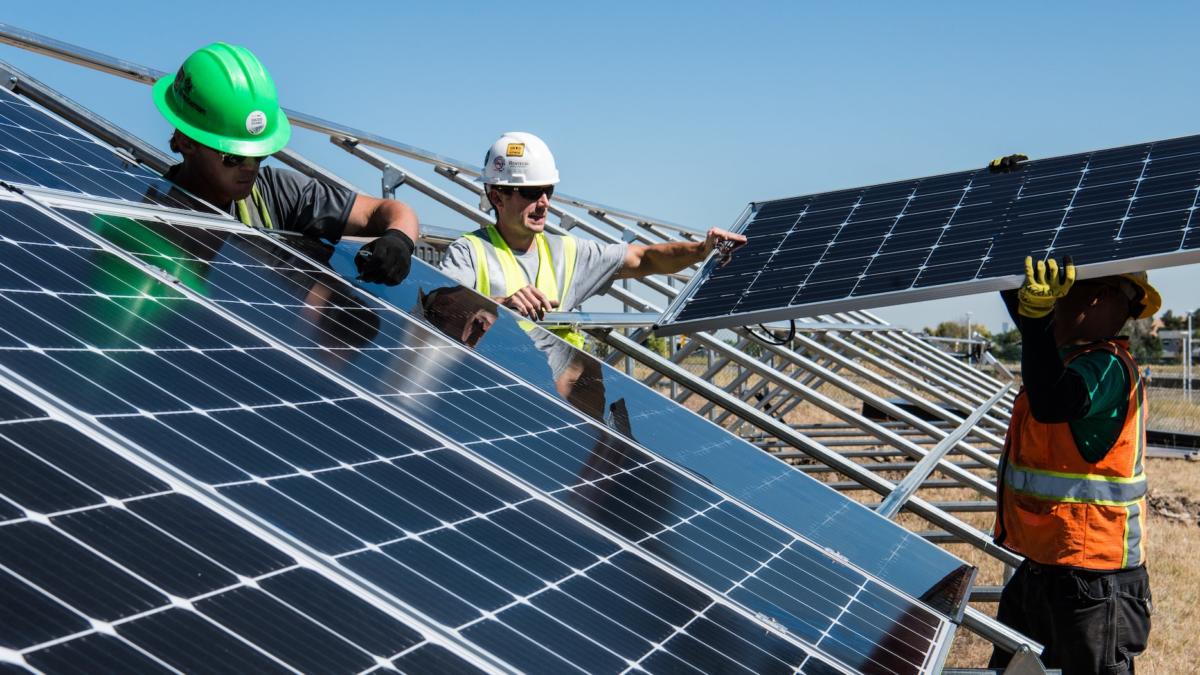Lessons during a pandemic: A way to save nature
2020 has been an unprecedented year to say the least. The last few months have taught us all a lot – about ourselves, our communities, our fragility – but most surprisingly just how quickly we can adapt, both locally and globally. The COVID-19 pandemic has shifted our world almost overnight. For better or worse, our lives have changed in some capacity.
One of the lessons I believe we’ve all taken to heart is just how valuable our parks and public open spaces truly are. Now, more than ever, we’ve turned to nature to help us in this time to escape the news, the constant overwhelm and anxiety, and isolation. Even if it’s just been in our backyards or gardens, we’ve reconnected with nature to soothe our souls and find peace in a time of turmoil. It’s been our constant in this ever-changing world.
This time has also given us the opportunity to once again consider what’s most important to us. To strip down the excess and examine what we value in our lives and communities. I see a shift in our collective understanding that the natural world isn’t just a nice to have, but a valuable interconnected part of our lives today and for future generations to come.
Here in Philadelphia, we appreciate our parks and waterfronts, most residents can find themselves in nature within 10 minutes of where they live. We’ve put forth intentional effort to protect and preserve our cherished natural resources and they have provided us with benefits beyond a dollar value. From the office of sustainability to the Green City, Clean Water program, we support our local environment.
Despite this, Philadelphia is also becoming hotter and wetter due to climate change, and this adds a layer of challenge to our approach in managing these resources and creating a sustainable future. However, there is more we can do. Thankfully other cities and states have recognized the many threats we face and have helped to put forth a national call to action in the “Thirty by Thirty Resolution to Save Nature.” This resolution calls on the federal government to establish a national goal of conserving at least 30 percent of the land and 30 percent of the ocean of the United States by 2030. The resolution responds to scientific recommendations to help address the current extinction, climate and biodiversity crisis because nature, like climate, is at a tipping point.
As an ambassador of the Inland Ocean Coalition – a network of people fighting to protect ocean health by building a land-to-sea connection – I know how deeply interconnected we all are to the health of our oceans by our actions inland. The oceans help regulate our climate and absorb most of the carbon we release. To fight off the worst impacts of climate change locally and globally we’ll need a collaborative approach to protect ocean health and our natural environment.
This is where 30×30 comes into play. Scientists say that protecting at least 30 percent of the world’s lands and oceans by 2030, and 50 percent by 2050, will be necessary to prevent mass extinctions and ecological collapse. In the United States only 12 percent of the land area and 26 percent of U.S. oceans have been conserved as protected areas. As we pause to reflect and observe our surroundings more closely during this time, let’s use this as a proactive call to action. Let’s build momentum to fight for what we really value, what truly matters: our earth, land, water and air, and our natural resources. Let’s reach out to our elected officials to support this legislation, share it with those we know, get involved with local clean up efforts, and use our social media platforms to amplify this message. Together we can make this happen.
We’ve proven to ourselves and the world we have the capacity to swifty change and adapt our lives when the time calls for it. The environmental crisis we face no longer needs to be something we wait on; we now know we can work together for the greater good. Let’s rise to the challenge of our time to face this together – nature will take care of us if we take care of it.
– Nicole Matthesen is an Inland Ocean Ambassador working to build a land-to-sea connection and local Philly environmental advocate supporting efforts to create a sustainable future.
Guns and young people
Young people need a lot of mentoring and a lot of direction. We, the adults in their juvenile lives, should never expect them to learn or know the set forth realities of the world on their own automatically.
For many years, I worked as a middle school teacher. I personally thought it was my professional responsibility to teach kids right from wrong. Teaching social studies allowed me to accomplish this goal.
I started with the Second Amendment. Informing youngsters, the Constitution grants every citizen the right to bear arms. Stating that to them, I received giggling responses. Right then, they learned that everything isn’t gangster.
– Wayne E. Williams | Camden, NJ
Renewables alone can’t save the planet
Coalville wants to ditch fossil fuels. The Utah city has pledged to draw its electricity from 100 percent renewable sources by 2030. From California to New Hampshire, dozens of cities have set similar goals.
But these cities can’t produce and store enough wind and solar power to run solely on renewables. As a result, their ambitious environmental policies could soon leave them powerless. Fortunately, these cities can rely on natural gas to supplement renewables while still reducing emissions.
Renewable energy sources are frequently unreliable. Solar and wind-powered grids can’t generate electricity on still, cloudy days. A city, state, or country that relies on renewables alone needs to store enough energy to power its grid when wind turbines and solar panels fail. Most cities can’t manage that. The country would need 900 times its current energy storage capacity to rely entirely on renewables, according to energy consultancy Wood Mackenzie.
Several states have already struggled with the shift to renewables. For instance, wind farms account for nearly a quarter of Texas’ electricity generation capacity. But during a recent heat wave, slow breezes caused the state’s wind power generation to plummet. As temperatures in Dallas rose to over 100 degrees, fear of a power shortage sent energy prices through the roof. The average wholesale price for electricity hit over $6,500 per megawatt-hour, an increase of 36,000 percent.
California has had similar problems with wind power. One scorching day in July 2018, electricity demand peaked at 5pm and remained high through the night, but wind and solar production had peaked hours earlier, as Robert Bryce explained in the Orange County Register. More than 30,000 Angelinos went several hours without electricity as temperatures reached 108 degrees.
Cities can avoid nightmare scenarios like these by employing natural gas alongside renewables. Compared to wind and solar power, natural gas has a much more reliable supply and can more easily be produced in a pinch. As a result, natural gas would help cities avoid an energy crisis when their renewable energy sources failed.
Contrary to what environmentalists claim, relying on natural gas helps the environment. The advent of “fracking” has made cheap natural gas more widely available. This abundance of affordable gas has enabled the American energy sector to move away from coal, a relatively dirty energy source. Compared to natural gas, coal generates twice as much carbon dioxide. In 2018, natural gas accounted for 35 percent of all U.S. electricity generation – up from 17 percent in 2001. Meanwhile, in 2018 U.S. coal consumption hit a nearly 40-year low.
Natural gas helped bring U.S. energy-related emissions to their lowest level in 30 years. The United States emits 14 percent less carbon dioxide than it did in 2000, according to the International Energy Agency. U.S. emissions would have been 15 percent higher last year if natural gas hadn’t displaced coal, according to the IEA.
Shifting to renewable energy sources may help people feel more environmentally conscious. But if city officials want to help reduce emissions without depriving their residents of electricity, they can’t abandon natural gas.
– Drew Johnson is a columnist and energy policy expert who serves as a senior fellow at the National Center for Public Policy Research.





